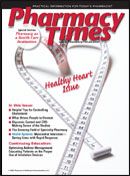Publication
Article
Pharmacy Times
Drug Transporters: The Final Frontier for Drug Interactions
Transporter proteins transport drugs in and out of cells and are susceptible to reduced or enhanced activity depending on drug exposure.
Drs. Horn and Hansten are both professorsof pharmacy at the University ofWashington School of Pharmacy. Foran electronic version of this article,including references if any, visitwww.hanstenandhorn.com.
The knowledge of the specificenzymes responsible for drugmetabolism has expanded overthe past 15 years. We now understandthat many drugs are actively transportedinto and out of cells by a variety of transporterproteins susceptible to reducedor enhanced activity upon exposure tocertain drugs.
Drug transporters are usually eitheruptake or efflux. The Figure shows someof the transporters found at the apical(luminal) side of the enterocytes in thesmall intestine. P-glycoprotein (P-gp)is an efflux transporter that takes drugmolecules from the cell cytoplasm andtransports them back into the intestinallumen for excretion. For some orallyadministered drugs, this limits their bioavailability.The organic anion transportingpolypeptide and organic cationtransporter are uptake transporters thatmediate the transport of molecules intothe cell. In addition to the enterocyte,these and other transporters are foundon the apical side of renal tubular cellsand the bile canaliculi. Transporters canalso be found on the luminal surface ofcapillary endothelial cells in the brainand in renal tubular cells.

P-gp transports many drugs that aresubstrates of CYP3A4. When a drug thatis a substrate of P-gp and CYP3A4 istaken orally, it has to diffuse through theenterocytes to gain access to the systemiccirculation. P-gp and CYP3A4 actas barriers to the systemic exposure ofexogenous substances including drugs.Some drug molecules will be transportedout of the enterocyte by P-gpand be eliminated without absorption.Other molecules will be metabolizedby CYP3A4 in the enterocyte and lostto pharmacologic activity. P-gp helpsmodulate the number of drug moleculesin the enterocyte and therefore helpsto prevent saturation of CYP3A4. Thisresults in an increase in the efficiency offirst-pass drug metabolism. CYP3A4 concentrationsdecrease from the proximalto distal portions of the intestine. P-gpcontent increases from the proximal todistal intestine. Thus, where an excessof CYP3A4 is available for metabolism,less P-gp is present. Conversely, whereCYP3A4 concentrations are lower, moreP-gp is found to prevent saturation ofthe enzyme.
An inhibitor of P-gp will increase thebioavailability of a P-gp substrate, whereasinduction of P-gp will reduce the bioavailabilityof a substrate drug. Digoxinis a drug that is a substrate of P-gp but isnot metabolized by CYP3A4. P-gp inhibitsits bioavailability and contributes toits renal and biliary secretion.
The coadministration of the P-gpinhibitors erythromycin or clarithromycinto patients receiving chronic digoxinhas been noted to result in an increasein serum digoxin concentrations.1 Inanother study, clarithromycin increasedthe area under the plasma concentration-time curve (AUC) following oraldigoxin administration by about 1.7-fold.2 The AUC of digoxin administeredintravenously was increased 1.2-foldduring clarithromycin dosing.
The ability of quinidine to increasedigoxin concentrations has been welldescribed. Quinidine not only increasesthe bioavailability of digoxin, it alsoreduces the biliary and renal secretionof digoxin by inhibiting P-gp activity.Because P-gp is present in the endotheliumof capillaries in the brain and functionsas part of the blood?brain barrier,a P-gp inhibitor may enable a greaterpercentage of digoxin to reach the braincausing increasedcentral nervous systemside effects. Conversely, P-gp inducerscan reducedigoxin plasma concentrations."
Table
Substrates, Inhibitors, and Inducers of P-glycoprotein
Substrates
Inhibitors
Inducers
Colchicine
Amiodarone
Carbamazepine
Cyclosporine
Clarithromycin
Rifampin
Digoxin
Erythromycin
St. John's wort
Fexofenadine
Ketoconazole
Tipranavir
Indinavir
Quinidine
Morphine
Saquinavir
Sirolimus
Verapamil
References
- Eberl S, Renner B, Neubert A, et al. Role of P-glycoprotein inhibition for drug interactions: evidence from in vitro and pharmacoepidemiological studies. Clin Pharmacokinet. 2007;46(12):1039-1049.
- Rengelshausen J, Goggelmann C, Burhenne J, et al. Contribution of increased oral bioavailability and reduced nonglomerular renal clearance of digoxin to the digoxin-clarithromycin interaction. Br J Clin Pharmacol. 2003;56(1):32-38.
- Gurley BJ, Swain A, Williams DK, Barone G, Battu SK. Gauging the clinical significance of P-glycoprotein-mediated herb-drug interactions: comparative effects of St. John's wort, Echinacea, clarithromycin, and rifampin on digoxin pharmacokinetics. Mol Nutr Food Res. 2008;52(7):772-779.







